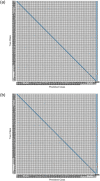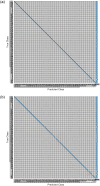Stacked-gait: A human gait recognition scheme based on stacked autoencoders
- PMID: 39441812
- PMCID: PMC11498718
- DOI: 10.1371/journal.pone.0310887
Stacked-gait: A human gait recognition scheme based on stacked autoencoders
Abstract
Human gait recognition (HGR) is the mechanism of biometrics that authors extensively employ to recognize an individuals based on their walking traits. HGR has been prominent for the past few years due to its surveillance capability. In HGR, an individual's walking attributes are utilized for identification. HGR is considered a very effective technique for recognition but faces different problematic factors that degrade its performance. The major factors are variations in clothing, carrying, walking, etc. In this paper, a new hybrid method for the classification of HGR is designed called Stacked-Gait. The system is based on six major steps; initially, image resizing is performed to overcome computation problems. In the second step, these images are converted into grey-scale to extract better features. After that, the dataset division is performed into train and test set. In the next step, the training of the autoencoders and feature extraction of the dataset are performed using training data. In the next step, the stacking of two autoencoders is also performed. After that, the stacked encoders are employed to extract features from the test data. Finally, the feature vectors are given as input to various machine learning classifiers for final classification. The method assessment is performed using the CASIA-B dataset and achieved the accuracy of 99.90, 98.10, 97.20, 97.20, 96.70, and 100 percent on 000, 180, 360, 540, 720, and 900 angles. It is pragmatic that the system gives promising results compared to recent schemes.
Copyright: © 2024 Mehmood et al. This is an open access article distributed under the terms of the Creative Commons Attribution License, which permits unrestricted use, distribution, and reproduction in any medium, provided the original author and source are credited.
Conflict of interest statement
The authors have declared that no competing interests exist.
Figures











Similar articles
-
A Fusion-Assisted Multi-Stream Deep Learning and ESO-Controlled Newton-Raphson-Based Feature Selection Approach for Human Gait Recognition.Sensors (Basel). 2023 Mar 2;23(5):2754. doi: 10.3390/s23052754. Sensors (Basel). 2023. PMID: 36904963 Free PMC article.
-
Fusion of sparse representation and dictionary matching for identification of humans in uncontrolled environment.Comput Biol Med. 2016 Sep 1;76:215-37. doi: 10.1016/j.compbiomed.2016.07.007. Epub 2016 Jul 20. Comput Biol Med. 2016. PMID: 27498411
-
Human Gait Recognition: A Single Stream Optimal Deep Learning Features Fusion.Sensors (Basel). 2021 Nov 15;21(22):7584. doi: 10.3390/s21227584. Sensors (Basel). 2021. PMID: 34833658 Free PMC article.
-
On Learning Disentangled Representations for Gait Recognition.IEEE Trans Pattern Anal Mach Intell. 2022 Jan;44(1):345-360. doi: 10.1109/TPAMI.2020.2998790. Epub 2021 Dec 7. IEEE Trans Pattern Anal Mach Intell. 2022. PMID: 32750777
-
[The present situation and future development of research on new algorithms of gait recognition with multi-angles].Sheng Wu Yi Xue Gong Cheng Xue Za Zhi. 2014 Feb;31(1):205-9. Sheng Wu Yi Xue Gong Cheng Xue Za Zhi. 2014. PMID: 24804512 Review. Chinese.
References
-
- Murray M.P., Drought A.B., and Kory R.C.J.J., Walking patterns of normal men. 1964. 46(2): p. 335–360. - PubMed
-
- Zhang, R., C. Vogler, and D. Metaxas. Human gait recognition. in 2004 Conference on Computer Vision and Pattern Recognition Workshop. 2004. IEEE.
-
- Katz J.N., et al.., Degenerative lumbar spinal stenosis Diagnostic value of the history and physical examination. 1995. 38(9): p. 1236–1241. - PubMed
-
- Jellinger K., et al.., Neuropathology of Rett syndrome. 1988. 76(2): p. 142–158. - PubMed
-
- Wildes R.P.J.P.o.t.I., Iris recognition: an emerging biometric technology. 1997. 85(9): p. 1348–1363.
MeSH terms
LinkOut - more resources
Full Text Sources
Miscellaneous

